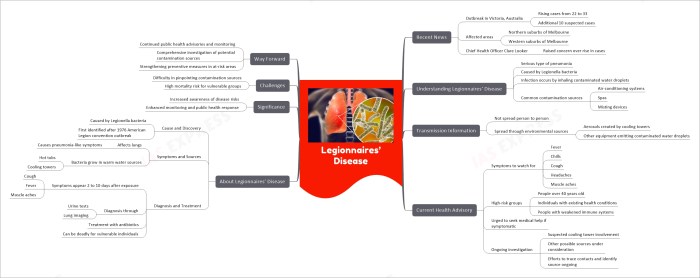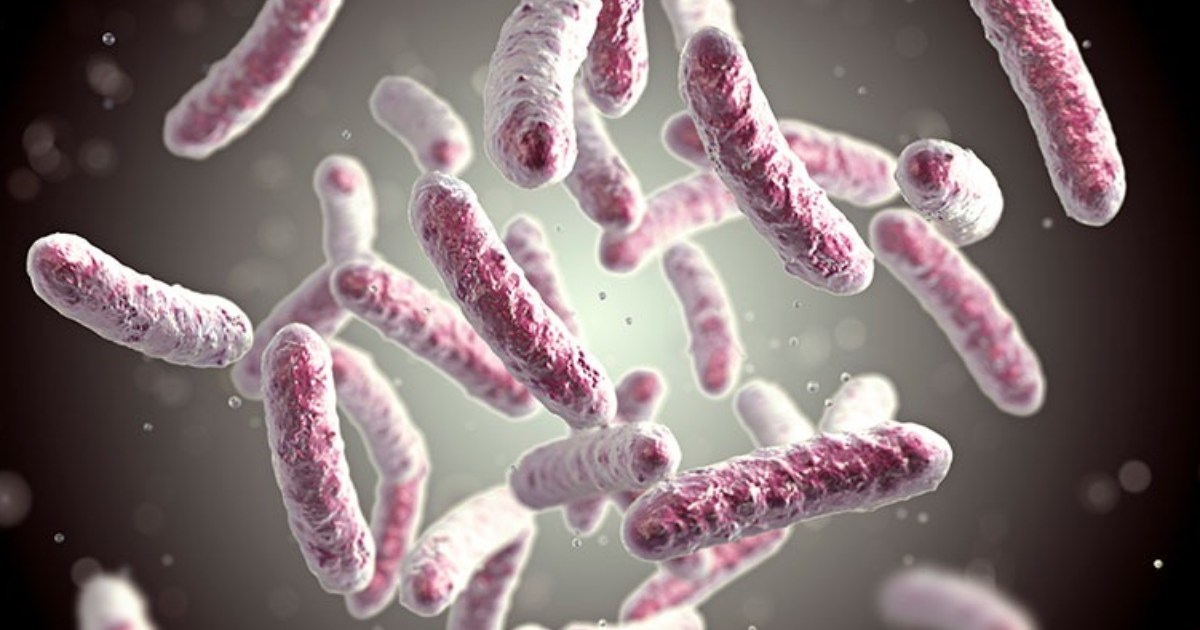Legionnaires disease outbreak melbourne – The recent Legionnaires’ disease outbreak in Melbourne has raised concerns about the health risks associated with this potentially fatal illness. This article provides an overview of Legionnaires’ disease, its causes, symptoms, and the preventive measures that can be taken to reduce the risk of infection.
Legionnaires’ disease is a severe form of pneumonia caused by the Legionella bacteria. It is typically contracted by inhaling contaminated water droplets, often from sources such as cooling towers, hot tubs, and showers. Symptoms of Legionnaires’ disease can include fever, chills, muscle aches, and shortness of breath.
Legionnaires’ Disease Outbreak in Melbourne

Legionnaires’ disease is a severe respiratory infection caused by the bacteria Legionella pneumophila. It is commonly acquired from inhaling contaminated water droplets or aerosols. The recent outbreak in Melbourne, Australia, has raised concerns about the disease’s transmission and prevention.
Timeline of the Outbreak
The outbreak was first detected in March 2023, with several cases reported in close proximity to each other. Investigations by public health authorities identified a cooling tower as the likely source of the outbreak. Containment measures were implemented, including the disinfection of the cooling tower and surrounding areas.
Source Identification
Environmental sampling and testing confirmed the presence of Legionella pneumophila in the cooling tower. Cooling towers are known to provide a favorable environment for the growth and spread of Legionella bacteria, as they create warm, moist conditions.
Risk Factors and Transmission

Individuals over the age of 50, smokers, and those with weakened immune systems are at increased risk of developing Legionnaires’ disease. The bacteria is transmitted through the inhalation of contaminated water droplets or aerosols, typically generated from sources such as cooling towers, showers, and humidifiers.
Clinical Presentation and Treatment
Symptoms of Legionnaires’ disease include fever, chills, muscle aches, and a dry cough. In severe cases, it can lead to pneumonia and respiratory failure. Treatment typically involves antibiotics and supportive care, such as oxygen therapy and mechanical ventilation.
Public Health Response, Legionnaires disease outbreak melbourne
In response to the outbreak, public health authorities implemented surveillance measures to monitor for new cases and identify any potential additional sources of infection. Contact tracing was conducted to identify individuals who may have been exposed to the bacteria. Health education campaigns were also launched to raise awareness about Legionnaires’ disease and preventive measures.
Prevention and Control
Preventive measures to reduce the risk of Legionnaires’ disease include proper water management and maintenance of cooling towers. Regular cleaning and disinfection of water systems, as well as monitoring for Legionella bacteria, are crucial. Regulations and guidelines exist to ensure that cooling towers and other potential sources of Legionella are adequately managed and maintained.
Last Word: Legionnaires Disease Outbreak Melbourne

Understanding the causes and symptoms of Legionnaires’ disease is crucial for preventing and controlling its spread. By implementing preventive measures such as proper water management and cooling tower maintenance, we can significantly reduce the risk of Legionnaires’ disease outbreaks and protect public health.
Question & Answer Hub
What are the symptoms of Legionnaires’ disease?
Symptoms of Legionnaires’ disease can include fever, chills, muscle aches, shortness of breath, and fatigue.
How is Legionnaires’ disease transmitted?
Legionnaires’ disease is transmitted by inhaling contaminated water droplets, often from sources such as cooling towers, hot tubs, and showers.
How can I prevent Legionnaires’ disease?
Preventive measures include proper water management, cooling tower maintenance, and avoiding exposure to contaminated water sources.